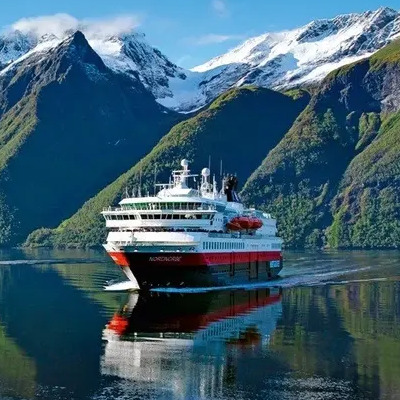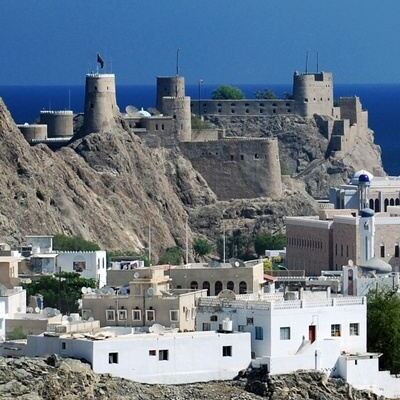Have you ever fantasized about embarking on the ultimate mountaineering adventure—trekking from Everest Base Camp to Camp 1? While this doesn’t involve summiting the highest peak in the world, it is a challenging and breathtaking journey that leaves even the most experienced of trekkers awestruck. As we from Good Earth Expeditions, the experts in crafting unique travel experiences, embark on explaining the practical aspects of this trek, it’s essential to understand that armchair enthusiasm needs to be complemented with an understanding of the rigors of the path.
Starting in Lukla in the Solukhumbu region of Nepal and culminating at an altitude of 5,380m at Everest Base Camp, this journey is often mistaken for a casual walk in the mountains. The truth is far from it. Embarking on the route from Everest Base Camp to Camp 1 is not an easy feat. The rough terrain, cable bridges, and unpredictable weather conditions make this not just a trek, but an expedition of a lifetime. It demands a good physical condition, mental toughness, and the ability to adapt to high altitudes.
To visualize the journey to the highest and most daring base camp in the world, we’ve summarized key information in a brief overview to get you started:
- Start: Lukla in the Solukhumbu region of Nepal
- End: Camp 1
- Total Distance: Approximately 130km
- Total Duration: Approximately 11 days (return)
- Altitude of Base Camp: 5,380m above sea level
- Fitness Level Required: Good

The detailed practical guide that follows is based on our extensive experience and will provide you with critical understanding and tips to navigate this journey. From understanding the terrain to acclimating at high altitudes and insights on costs, we’ve got you covered. Buckle up as we dive deeper into the exploration of the enticing, yet demanding route from Everest Base Camp to Camp 1. Your dream adventure awaits!
Understanding the Everest Base Camp to Camp 1 Route
Embarking on the journey from the Everest Base Camp to Camp 1 is an exhilarating experience, filled with challenges and breathtaking views. As we venture into the heart of the Himalayas, it’s crucial to understand the specifics of this route.
The Distance and Elevation from Base Camp to Camp 1
The trek from Everest Base Camp to Camp 1 is a demanding one, spanning a distance of approximately 2.9 kilometers, or around 1.8 miles. Everest Base Camp sits at an altitude of 5,364 meters (17,598 feet) above sea level, while Camp 1 is perched at an elevation of nearly 6,065 meters (19,900 feet).
The Terrain and Challenges of the Route
The terrain between Everest Base Camp and Camp 1 is both rugged and awe-inspiring. One of the main challenges on this route is traversing the treacherous Khumbu Icefall, a fast-moving glacier filled with deep crevasses and towering ice seracs, which requires technical climbing skills, excellent physical condition, and a positive mental attitude.
It’s not uncommon for trekkers to experience fatigue and symptoms of altitude sickness due to the rapid gain in altitude. However, with appropriate training, acclimatization, and a well-planned itinerary, these challenges can be overcome.
The Importance of the Khumbu Icefall
The Khumbu Icefall is one of the most dangerous stages of the South Col route to Everest’s summit. It is located at the head of the Khumbu Glacier just above Base Camp. Trekkers must navigate this constantly shifting icefall using ladders and ropes fixed by Sherpas.
Due to the icefall’s unpredictable nature, with crevasses opening without warning and ice towers (seracs) collapsing, it is crucial to cross it early in the morning when the ice is more stable. Despite the risk, the Khumbu Icefall is revered for its raw beauty and provides a thrilling challenge for those who dare to cross it.
Understanding the Everest Base Camp to Camp 1 route is just the first step in your journey. Next, we’ll delve into the preparation necessary for this high-altitude trek, including training and equipment needs. With the right preparation and mindset, you’ll be ready to tackle this adventure and enjoy the breathtaking vistas the Himalayas have to offer.
Preparing for the Trek from Base Camp to Camp 1
Before embarking on the trek from Everest Base Camp to Camp 1, proper preparation is crucial to ensure a successful and enjoyable journey. From acclimatization to training and selecting the right equipment, each aspect plays a vital role in your overall experience.
The Importance of Acclimatization
The trek from Everest Base Camp to Camp 1 takes you through high-altitude zones, where the air is thin and oxygen levels are significantly lower than at sea level. This can lead to altitude sickness if you’re not properly acclimatized.
Acclimatization is the process of allowing your body to adapt to the change in altitude and atmospheric pressure. As one trekker learned the hard way, without proper acclimatization, symptoms of altitude sickness like dizziness, headaches, and nausea can quickly escalate, leading to a failed expedition (IanTaylorTrekking).
To minimize the risk of altitude sickness, we incorporate acclimatization days into our itineraries. This means spending additional nights at key points during the trek to allow your body to adjust to the altitude. The golden rule is to climb high and rest low.
Necessary Training for High Altitude Trekking
The trek from Everest Base Camp to Camp 1 requires physical fitness and endurance. It involves several days of walking for around 8 hours at a time at high altitudes (KandooAdventures).
To prepare, we recommend a balanced training regime that combines cardiovascular exercises like running or cycling, strength training for your core and legs, and hiking in varied terrain to simulate the conditions of the trek. If possible, try to train in high-altitude conditions to familiarize your body with the decreased oxygen levels.
Essential Equipment for the Trek
Choosing the right equipment is another critical aspect of preparing for the Everest Base Camp to Camp 1 trek. You’ll need to consider a sleeping bag and sleeping bag liner, depending on the type of accommodation you’ll be staying in. Walking poles can also be beneficial during your trek, and a warm down jacket for the higher altitudes is highly recommended (KandooAdventures).
At Good Earth Expedition, we provide a comprehensive gear list as part of our trekking packages. We believe that having the right gear can make a significant difference in your trekking experience.
In conclusion, the key to a successful trek from Everest Base Camp to Camp 1 lies in thorough preparation. From acclimatizing to the altitude, building up your physical fitness, and equipping yourself with the right gear, every aspect contributes to your overall trekking experience. With the right preparation, you’ll be ready to conquer the route and make unforgettable memories in the majestic Himalayas.
The Cost of Trekking from Everest Base Camp to Camp 1
Trekking from Everest Base Camp to Camp 1 isn’t just a physical challenge, but also a financial one. The costs associated with the journey can be quite substantial, but don’t let that discourage you. With proper planning and smart choices, you can manage your expenses effectively.
Permit Fees for Base Camp and Camp 1
Before you set foot on the trail, you need to secure the necessary permits. The permit to reach Everest Base Camp costs only $50. However, if you plan to move beyond Base Camp, you need to purchase an additional permit for $11,000. This fee allows you to go as far as Camp 1 and beyond. Violating these regulations can result in hefty fines ($22,000) and possible jail time. In autumn, you can potentially go as high as Camp III for a lower fee of $900 if you purchase a Lhotse summit permit.
The Cost of Joining an Expedition
Joining an organized expedition is a practical way to handle the logistics of the trek. We at Good Earth Expedition offer an inclusive 20-day Base Camp Everest trek. By joining an expedition, you gain the benefit of experienced guides, pre-arranged accommodation, and assistance with the necessary permits and paperwork. The cost of such expeditions can vary, depending on the services included. It’s worth noting that these costs do not include personal gear and equipment.
Saving Money by Buying Gear in Nepal
Given the technical nature of the trek, having the right gear is crucial. While you can purchase gear in your home country, many trekkers opt to buy their equipment in Nepal. The reason is simple – it can be significantly cheaper. Nepal’s bustling outdoor markets offer a wide range of climbing gear at affordable prices. You may also find used gear left behind by other climbers, offering further savings.
In conclusion, the cost of trekking from Everest Base Camp to Camp 1 can be substantial but manageable. It’s all about planning ahead, understanding the associated costs, and making smart choices. In the end, the experience of conquering the majestic Everest will be worth every penny spent.
Navigating the Route from Everest Base Camp to Camp 1
When embarking on a journey from Everest Base Camp to Camp 1, it is crucial to have a clear understanding of the route, the best time for the trek, and the importance of having a guide.
The Role of a Guide in the Trek
A well-informed and experienced guide is essential for the Everest Base Camp to Camp 1 trek. They will provide critical knowledge about the terrain, weather conditions, and potential hazards. They will also be able to customize the route to avoid crowds and ensure the best possible experience. As per the Much Better Adventures guide, a good guide should tailor your route to ensure you don’t spend much time in crowds.
At Good Earth Expedition, we understand the importance of having a reliable guide during such a challenging trek. Our guides are experienced mountaineers who have detailed knowledge about the Everest region. They prioritize your safety and work hard to provide a unique and memorable trekking experience.
The Best Time to Trek from Everest Base Camp to Camp 1
The timing of your trek can greatly impact your experience. If you choose to travel in December, January, or February, you can avoid most of the crowds but you may face weather delays and colder temperatures. On the other hand, the climbing season on Mount Everest is usually a window of around 10-15 days in May, just before the monsoons arrive in June. This is when the base camp will be buzzing with people aiming to get to the summit, and it’s also the warmest month of the year on the Everest Base Camp trek.
Navigating the Khumbu Icefall
The route from Everest Base Camp to Camp 1 involves traversing the Khumbu Icefall, one of the most dangerous points on the Everest summit route. Most climbers leave Base Camp for the Khumbu Icefall between 4-5 am when the ice is more solidly frozen and less likely to move. Despite being early in the route, the Khumbu Icefall is notorious for its unpredictability, with hidden crevasses and the risk of avalanches.
In conclusion, navigating the route from Everest Base Camp to Camp 1 requires careful planning, experienced guidance, and an understanding of the best times to make the journey. At Good Earth Expedition, we’re committed to helping our clients successfully navigate this challenging trek and achieve their mountaineering goals. Whether you’re an experienced climber or a novice trekker, we’re here to ensure you have a safe, enjoyable, and unforgettable journey to the roof of the world.
Personal Experiences on the Route from Base Camp to Camp 1
Learning from a Failed Attempt
There’s a saying among mountaineers: “The mountain decides who reaches the summit.” This couldn’t be truer for the trek from Everest Base Camp to Camp 1. Just as one traveler recounted their first attempt, they faced a series of daunting challenges that led to an early retreat (source). But failure is not the end; it’s a lesson. It’s about understanding what went wrong and making a plan to overcome it next time. This is a crucial part of any mountaineering journey.
The Importance of Proper Preparation and Training
Training for an Everest Base Camp to Camp 1 trek is not just about physical fitness. It requires a holistic approach, encompassing not only physical prep but also mental strength, acclimatization, and even a knowledge of the terrain and weather conditions. As our traveler found, having a high level of fitness wasn’t enough. The altitude, combined with a fast pace and poor acclimatization, caused altitude sickness, ultimately forcing a retreat.
At Good Earth Expedition, we place a high value on proper preparation and training. We don’t rush the journey; instead, we ensure that trekkers are given ample time to acclimatize and understand the trail’s challenges.
The Satisfaction of Reaching Camp 1
Despite the challenges, reaching Camp 1 brings a sense of accomplishment that’s hard to put into words. It’s a testament to your determination, resilience, and strength. Once you’ve conquered the route from Everest Base Camp to Camp 1, you’ll feel a sense of satisfaction that only a few in the world get to experience.
Our goal at Good Earth Expedition is to help you experience this sense of achievement. We do everything possible to ensure your safety and comfort, providing expert guidance and support every step of the way. We understand the challenges you’ll face and have the experience and knowledge to help you overcome them.
The journey from Everest Base Camp to Camp 1 is not just a physical trek. It’s a test of willpower, a lesson in perseverance, and ultimately, a journey of self-discovery. And with the right preparation, guidance, and mindset, it’s a journey you’re capable of completing.
Conclusion
The Importance of Preparation and Acclimatization
As we have explored throughout this guide, the journey from Everest Base Camp to Camp 1 is an adventure that requires careful preparation and acclimatization. As mentioned by experienced trekkers like Jason Myers, acclimatization and physical preparation make all the difference on this challenging trek. This is a process that should not be rushed, as your body needs time to adjust to the high altitude and low oxygen levels. Understanding this and incorporating rest days into your trekking schedule can help you avoid altitude sickness and increase your chances of successfully reaching Camp 1.
The Challenges and Rewards of the Trek from Base Camp to Camp 1
The trek from Everest Base Camp to Camp 1 is filled with challenges and obstacles, from crossing the treacherous Khumbu Icefall to tackling the steep ascent to Camp 1. These challenges, however, are a part of what makes this trek so rewarding. Each step you take brings you closer to achieving a goal that only a handful of people in the world have accomplished. Reaching Camp 1 and looking back at the path you’ve traversed, you’ll feel an immense sense of accomplishment and pride. As Jason Myers expressed during his second Everest Base Camp trek, “I really embraced my time at Everest Base Camp… I was immensely proud of myself.”
Encouragement for Future Trekkers
For those of you considering embarking on this adventure, we at Good Earth Expedition would like to extend our encouragement. We believe that with the right preparation, determination, and support, you can successfully navigate the route from Everest Base Camp to Camp 1. This journey is as much about self-discovery as it is about reaching a physical location. Every step, every struggle, and every triumph along the way contributes to a transformative experience that you will carry with you long after the trek is over.
We invite you to explore our upcoming expeditions, and look forward to being a part of your journey towards achieving this incredible feat.

No matter the challenges you face on the route from Everest Base Camp to Camp 1, remember: the journey is the destination, and each step you take is a testament to your strength and determination. So, here’s to the journey that lies ahead, and the incredible story you’ll have to tell at the end of it. Safe travels, and happy trekking!







